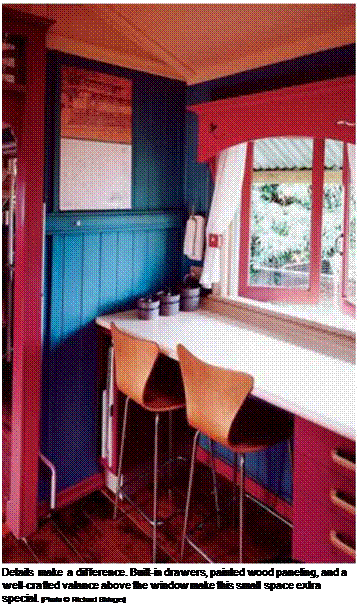Small doesn’t mean boring
Whether we admit it or not, we all respond emotionally to our surroundings. Buildings create interior environments that can be drab,
 distinctive, inspiring, or discouraging. How a building looks, how it’s laid out, the materials used—all these influence how we feel. I’ve visited huge, expensive homes that were not very inviting. Just because a house is big does not mean that it is warm and attractive.
distinctive, inspiring, or discouraging. How a building looks, how it’s laid out, the materials used—all these influence how we feel. I’ve visited huge, expensive homes that were not very inviting. Just because a house is big does not mean that it is warm and attractive.
Even a small, plain house can be made to feel inviting and uplifting, giving us pleasure, raising our spirits, and making us feel safe and secure (see the photo on the facing page). In the years that I’ve been a Habitat volunteer, I’ve had
the opportunity to give a few humble houses a bit more personality and life than they’d otherwise have had. In this book, I’ve tried to include many of the lessons I’ve learned—things such as ensuring that there are two sources of light in every room. For example, add an easy-to-install tube skylight in a dark area. Simple things like this can help make rooms bright and cheery.
Getting the details right will make life more convenient when you move into your house. Details also present many opportunities to make spaces special by using color schemes, hardware, unique materials, and built-in features (see the photo at left). As you’re working out your house’s design, ask yourself these key questions: “Is there a place to set groceries when I enter? Where will we hang up our coats or take off our boots when we come inside in the winter? Is it easy to get food to the table and to clear the dishes?” More than anything else you do, thinking about how you will actually live in the house will help you refine its design and ensure that the experience of living in it is a pleasant one.






Leave a reply